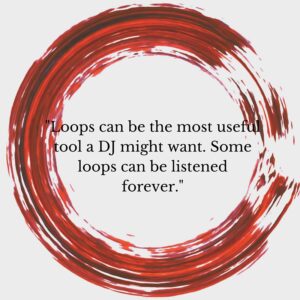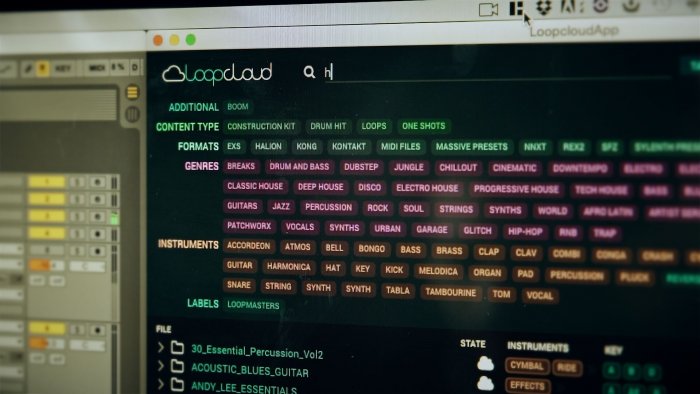Give A Direction To Your Loops
I have never studied sound or music theory. My blog is a pure description of how my mind and artistic view has grown through time and practice. In this post, I will share some observations on percussion and how it can give your loops a new meaning.
Make Tracks From Your Loops
If you’re into making techno or more beat-driven tracks, you pretty much have your own routine. It’s always a bit different from one person to another because we all hear in different ways or simply work in a different flow. But all in all, here’s some of what we can say to sum it up:
- Find an interesting idea.
- Have a sub-idea to support the main one.
- Fiddle the percussion around it.
- Arrangements and mixing.
When it comes to techno loops or other dance-related music, it sometimes happens that the percussion is the heart and soul of the track. There can be different reasons for this: it can be the DJ tools or loops, or it can also be that it’s just plain good as it is (e.g. a “foreverloop” that you never get bored of).
 If you’re into straight-up percussive loops and perhaps play with simple ideas for fun or for an eventual track, there are some tips you can keep in mind, just like I do. But let’s not get crazy about it either: On the one hand, some people study percussion all their lives without seeing all of its subtleties, while others can go to university and learn that every culture has its own intricate, complex way of doing it.
If you’re into straight-up percussive loops and perhaps play with simple ideas for fun or for an eventual track, there are some tips you can keep in mind, just like I do. But let’s not get crazy about it either: On the one hand, some people study percussion all their lives without seeing all of its subtleties, while others can go to university and learn that every culture has its own intricate, complex way of doing it.
Let’s keep it simple. But if you want to learn more, there are tons of great reads online.
So, in my case, I’ve been inspired by early workshops I did with Gabrielle Roth and have been interested in the “5 Rhythms” approach. Ever since, it’s been in the back of my head whenever I try to design my tracks. The 5 Rhythms categorize dance types into families based on their style of percussion. Roth believes that within an hour, once a practitioner experiences her use of the different rhythms, they can reach a level of personal enlightenment.
This can make you question, in a way, your own personal quest and reasons for making music. Are you making tracks or are you working on a bigger set of instruments with the purpose of transporting the listener elsewhere? Not to fall into pseudo-new-age stuff, but it certainly becomes more exciting when you give your music a significance.
Now, when it comes to the rhythms, they are:
- Flowing.
- Staccato.
- Chaos.
- Lyrical.
- Stillness.
One track can focus on one or multiple, but you can also integrate them all to create something balanced.
SEE ALSO: The Rule Of 10: Production in Rotation for Big Results
Flowing
To me, this is the most important one.
A good flow is the basis of all other rhythms.
It implies that your track, even with drastic changes, has a way of making all the rhythms work together so that it creates a cohesive whole. Great flow also makes a song catchy and re-playable.
When it lacks: There will be a feeling of awkwardness in the transitions. DJs will observe a drop of energy from the crowd.
Try: Working with transitions and arrangements. Try to separate your song into sections, and then find a way to move from one to another. That can be achieved with percussion changes or effects.
Staccato
Powerful and dynamic would be the best terms to describe this one. Think of huge samba drums or repetitive, hypnotic, minimal techno loops. The staccato is often dense and can go from very simple to very complex. It isn’t only necessary in percussion; it can also be in the form of simple arpeggios applied to a melody, for instance.
When it lacks: At some level, it can make a groove feel weak and static, which is the opposite of what a great staccato can bring to your work.
Try: Using arpeggios and applying them to any of your sounds. Tweak the settings to get something unexpected.
Chaos
Often hated by DJs who love linear and predictable loops for easier mixing, chaos here doesn’t necessarily refer to Ornette Coleman’s free jazz. I’d say it’s when things get a bit off the grid, and go slightly unquantified in the spirit of infusing your track with quirky grooves or unpredictable moments. When applied strategically, surprising a crowd can drive them crazy in a good way. Chaos can also refer to breaking free of standard genres and ideas to forge something new.
When it lacks: Your loop might sound generic, clinical, predictable — and yes, boring.
Try: Tapping percussions using PUSH. Apply weird grooves from Ableton. Adjust transients so they fall off the grid just a little bit. You may also slice your loop and randomize the order of the sounds.
Lyrical
To me this is the hardest, but that’s mainly because I’m more of an artist than a musician. What “lyrical” implies here is the use of melodies to conjure an emotion. There’s no restriction here: we’re talking pure emotional material, from sad to happy, deep to cheesy. Great melodies can become ear worms and can stay in people’s minds for a long time, making some material timeless. When someone can whistle your main idea, you know you have lyrical content.
When it lacks: Your song might be cold or simply ephemeral. There’s no main idea that we can refer to when describing it to someone else.
Try: Experimenting with melodies or asking a musician for help. You can turn to solutions like Liquid Rhythm to assist you as well.
Stillness
The most difficult to explain, because this one is a pure game of subtle micro-changes. Stillness in music is often translated to boring because nothing seems to happen. When nothing happens, a lot is happening… in the listener’s mind. They will start craving something, will start wondering, getting a bit anxious. Stillness is the art of creating an intelligent tension that makes the eventual release both soothing and powerful. You can also see it as linear music, which is a genre in itself. That is another game.
When it lacks: If you don’t allow for your listener to have any tension building, your song might feel self-supporting or shallow.
Try: Finding songs that build tension in you. When listening to them, pay attention to the very moment where you start getting a bit anxious, and notice how the song is built at that very moment so you can replicate the formula in your own music.
















Leave a Reply
Want to join the discussion?Feel free to contribute!